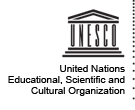Development Communication Society Nepal (SODEC-Nepal) intends to analyze the causes and consequences of impunity with in-depth analysis of the 35 cases of murdered journalists and the 4 missing journalists. It is anticipated that that this study will pressurize the government and state agencies to take the necessary legal steps to provide justice to the families of the
IPDC project priority: Human Resource Development
This project proposes innovative documentation of good practice through the use of participatory content creation / participatory audio and video production methodologies. The project will support the use of innovative new media technologies like the mobile and the internet to enable community radio stations to create and share this body of work with each other and with the national and global community
The Caribbean has a varied level of media development, with Trinidad & Tobago and Jamaica being the most sophisticated and Dominica and Guyana the least. Within the territories and countries of CARICOM (the Caribbean Community), there are about 25 local terrestrial stations and 60-100 cable channels. Radio licences exceed 300 and there are more than a dozen daily print newspapers and 5 weekly publications as well as on-line dailies and weeklies, all serving a population of about 6 million. There is a mix of private and state owned broadcasters with the latter dominating in some...
The proposal plans to work with 120 representatives. In La Paz, Cochabamba and Santa Cruz, each workshop will involve:
1) 5 public authorities and social actors.
2) 5 mass media journalists and trade unions’ representatives.
3) 10 students and professors from public and private universities.
In each case, men will represent the 50% of beneficiaries and women the other 50%.
Suriname has 19 television stations, 34 radio stations, 4 newspapers, 9 community radio stations, approximately 10 journals and about 9 new media news sites. The State owns 1 radio station 1 one television station. The rest of the media is privately owned. About 150 journalists are working at the media. The media sector employs mostly ‘self-made’ media workers who largely need to be educated and trained. This need also originates from a strong increase in the number of news media in the previous years and consequently also the number of required journalists. The purpose of the media in...
The development objective of this project is linked to Indicator 1.2 (on the right to information) and Category 4 (Professional capacity building) of the UNESCO/IPDC Media Development Indicators (MDIs). The project intends to build the capacities of local media in the use of Law 1712 of 2014 on Transparency and Access to information as a tool for enabling them to carry out stronger and better informed investigations.
Build awareness and capacity among 45 journalists on the use of the Law on Transparency and Access to Information in Colombia (Law 1712, 2014) through three one...
The UNESCO publication “World Trends of Expression and Media Development” (WTEMD) states that Latin America has very high levels of commercial media concentration. Although efforts are underway to establish anti-monopoly regulations, the process is slow or has failed to generate results. In countries such as Peru, Chile, Argentina, Mexico and Uruguay, there are intense debates about the need for government intervention in order to avoid monopolization of ownership and control of the media by a small number of groups due to the impact that they have on the quality of democratic debate. ...
The project will help to improve skills in reporting on gender, human rights, human mobility, refugees and children issues in Ecuador through professional training for Ecuadorean journaliTo organize a seminar for 50 Ecuadorean journalists and journalism students on how to effectively and ethically report on sensitive issues related to gender, human rights, human mobility, refugee and child issues, following ethical standards. Participation is to be gender equal.sm students and journalists.
Therefore, this project, which will take as reference the approach of UNESCO’s publication ‘Climate Change in Africa: A Guidebook for Journalists’7, which focused at raising awareness among journalists on the interdisciplinary core of the climate change and on how they can reflect that in their practices. The project aims at providing skills and knowledge for designing and implementing communication campaigns on DRM and CCA to at least 30 local journalists permanently working in the Ancash Region. This would be done through a 60-hour course in collaboration with the Universidad Nacional...
The relationship between the press and the judiciary in Argentina, as in other countries, is one that has historically been marked by tension. In the majority of cases, this tension leads neither to the bolstering of freedom of the press nor to the strengthening of the judicial system. Given these two entities' centrality in the democratic landscape of Argentina, the ongoing conflicts between them adversely affects not just the institutions, but also the exercise of democracy itself.
This tension stems equally from structural factors as from factors rooted in the poor...
